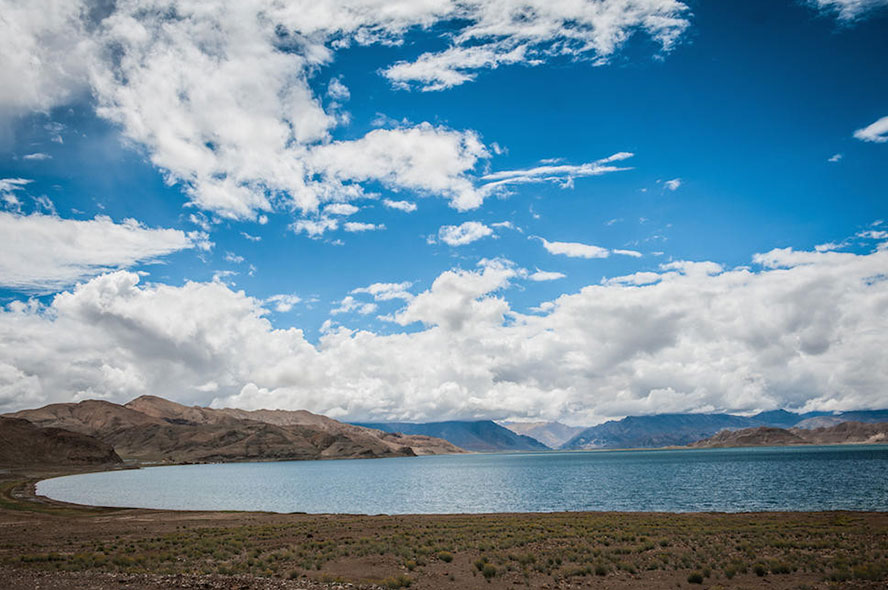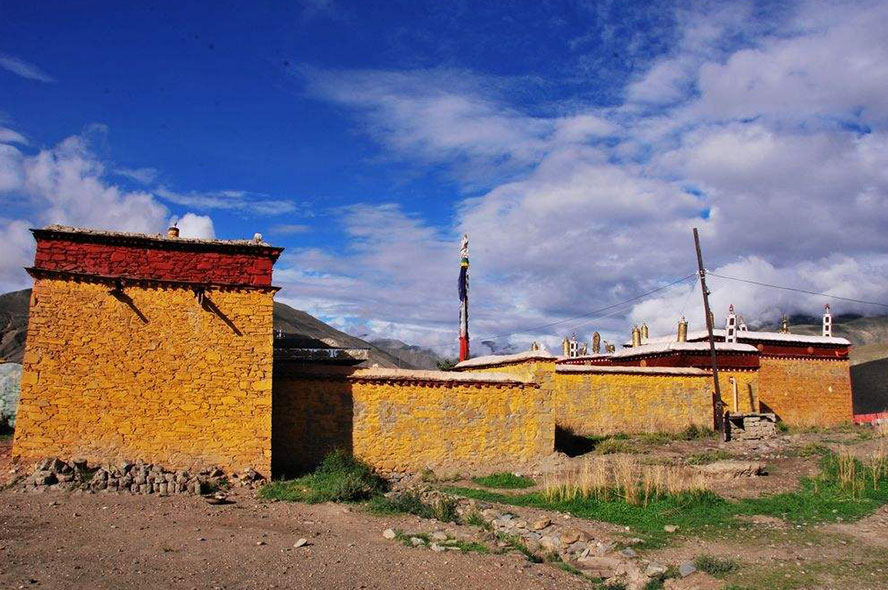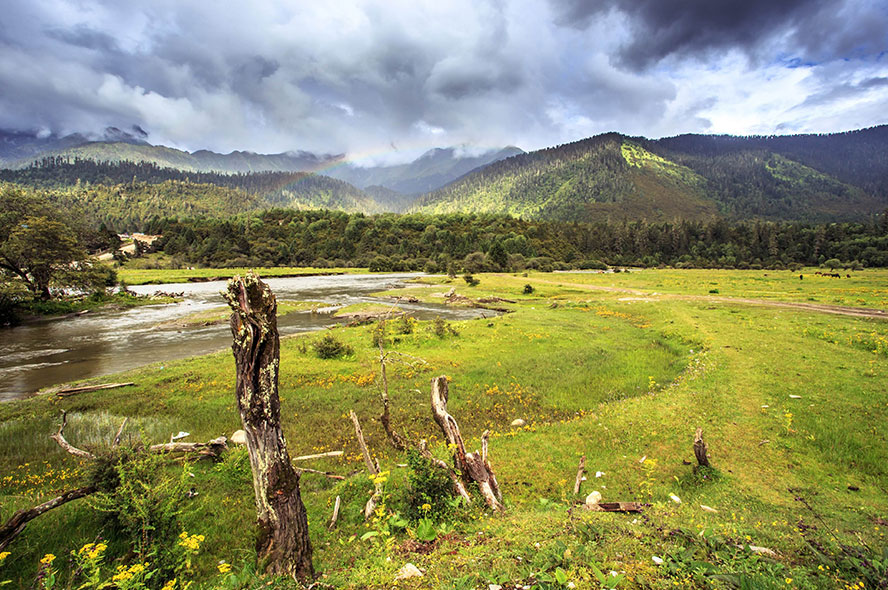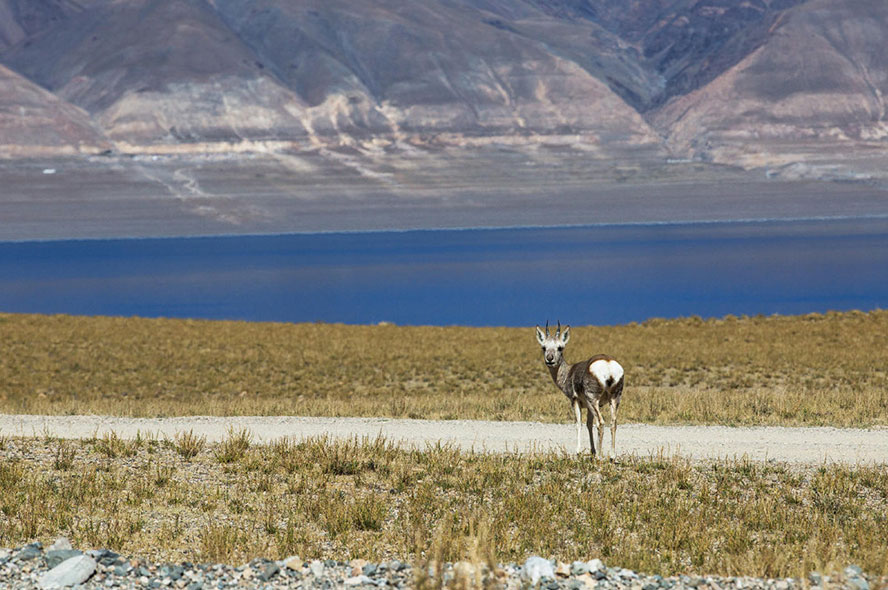Lhasa, which means the place where the gods live in the Tibetan language, is known as the "Sunlight City." It is the holy city in the heart of the Tibetan people and is now the "holy city" for tourists from all over the world. Lhasa is a mysterious existence. Whether it is the Potala Palace, the Jokhang Temple, or the Barkhor Street or the Norbulingka, there is always one place that can directly push you to the depths of your heart and become the destination of your soul.
It is the most concerned and worried problems for tourists who visit Tibet for the first time to deal with the altitude and altitude sickness in Lhasa. And you can get the answer in this article. Hope you can have a better understanding of the altitude and altitude sickness in Lhasa after reading this article.
Altitude in Lhasa
The average altitude of Lhasa is 3660 meters. And the terrain in the city is flat and there is not much altitude fluctuation. The main attractions are as follows:
Potala Palace - 3760 meters above sea level
The Potala Palace is located on the Mountain Maburi in the northwest of Lhasa, the height of which is 117 meters. So the altitude of the Potala Palace is the highest in the urban area of Lhasa. Generally speaking, we will arrange for tourists to visit the Potala Palace on the second or third day of their arrival in Tibet, which is the most favorable for tourists to adapt to the climate of the plateau.
Jokhang Temple - 3650 meters above sea level
Located in the center of the old city, Jokhang Temple is a Tibetan Buddhist Temple. The buildings of Jokhang Temple are not high, so a number of tourists choose to visit Jokhang Temple first when they travel to Lhasa.
Barkhor Street - 3650 meters above sea level
Barkhor street is located on the street outside the outer wall of the Jokhang Temple. It is the famous transiting road and commercial center of Lhasa, which is called "Holy Road" by Tibetans. This street is also the one where tourists can feel the atmosphere of Lhasa most, and it is also convenient for tourists to buy some souvenirs.
Drepung Monastery - 3700 meters above sea level
The Drepung Monastery is located in the western suburb of Lhasa at the foot of the Genpei Uzi Mountain.The entire temple is a large-scale temple. The white buildings are lined with hills which looks like the huge rice heap in the distance. Generally, you can visit the Drepung Monastery after resting in Lhasa for a day.
Sera Temple - 3700 meters above sea level
Sera temple is located in the northern suburbs of Lhasa which is 3km away and it's at the foot of the Sera Uzi Mountain. And the altitude of Sera temple is slightly higher than that of Lhasa city which requires tourists to reach the mountain on foot. Therefore, it is generally recommended not to go to Sera immediately after arriving in Lhasa. It's advised to visit Sera Temple after adapting to the altitude of Lhasa.
Norbulingka - 3650 meters above sea level
Norbulingka is a Tibetan-style garden. It is the summer palace corresponding to the Potala Palace. Besides, it is a summer resort which is worth visiting. It is a beautiful place and it's advised to visit on the first day after arriving in Lhasa.
Lhasa Airport - 3658 meters above sea level
The Gongga Airport of Lhasa is located 60 kilometers away from the urban area of Lhasa. It is located on the south bank of the Yarlung Zangbo River where there is a flat terrain. But for tourists visiting there, the altitude is still high. It is suggested that the tourists who arrive in Lhasa by plane should not be too excited. And when reaching Lhasa city, it is recommended to take a rest and try to move as little as possible, especially for mountain climbing. It's a good choice to sunbathe in the Barkhor Street area and taste Tibetan cuisine there.
Lhasa Railway Station - 3641 meters above sea level
Lhasa Railway Station is located on the south bank of the Lhasa River, facing the Drepung Monastery. The altitude of Lhasa Railway Station is the same as that of Lhasa that you can get used to it quickly as long as you get to Lhasa.
What are the symptoms of altitude sickness that may appear when you are in Lhasa?
Possible symptoms of altitude sickness from flying to Lhasa
It takes less time to get to Lhasa by plane, but the altitude will rise faster. Tourists arriving in Lhasa by plane may experience a reaction similar to that after riding a roller coaster, such as dizziness, hypoxia and shortness of breath. This is because the tourists have not been accustomed to the air in Lhasa at an altitude of 3,670 meters. Because of the high altitude and the lack of vegetation, the oxygen content in the air is low. The tourists who arrive here for the first time will have obvious hypoxia reaction. It's common to see this kind of hypoxic response. If you are in good health, it won't be dangerous.
After getting off the plane, it is suggested to keep a stable breathing and mentality. When you meet your guide and driver, take a rest on the bus and try to avoid doing intense exercise. Your body will naturally adapt to the current environment in 1 to 3 days.
Possible symptoms of altitude sickness during train journey to Lhasa
It takes a long time to take the train to Lhasa.The altitude will gradually rise from Xining. Some people will have mild symptoms of altitude sickness during the train ride, such as slight dizziness, head swelling and insomnia at night. It may not get worse, but it may last until you get off the train. It's common for people entering the plateau area for the first time to have such symptoms which will gradually abate and disappear after 2 to 3 days.
Of course, there are also tourists who will have no symptoms on the train, and they will have no obvious reaction when they arrive in Lhasa during the day. Instead, they will have a headache, dizziness, and swelling at night that make them unable to fall asleep. At this time, it's advised to have a rest in a good environment that will help ease your altitude sickness. If you have these uncomfortable symptoms, don't be panic. Just contact your tour guided in time, they will provide you with the most timely and appropriate treatment.
Possible symptoms of altitude sickness within three days of arrival in Lhasa
After arriving in Lhasa, we usually arrange tourists to visit the surrounding areas of Lhasa from the low altitude to the high altitude. And the Salad Temple and Potala Palace will be arranged on the second or third day of the tour. Because within three days, the symptoms of your dizziness, headache, and insomnia will gradually disappear. At last, the altitude sickness will slowly move away. After that, you will feel much better. The enthusiastic Tibetan people, warm sunshine and exquisite temples and buildings in Tibet will greatly satisfy your mood and help relieve altitude sickness.
How to deal with the altitude sickness after arriving in Lhasa?
Psychological prevention
It is said that the altitude sickness of visitors who keep thinking "what to do with altitude sickness" will come faster and stay longer. Instead, the symptoms of tourists who think that "the altitude is not high, all things must be okay" will disappear faster. Although it is not absolutely correct, having a healthy and good attitude will certainly help to alleviate the altitude sickness. Blind worry will not solve the problem, but will increase the possibility of altitude sickness. (How to deal with the altitude sickness in Tibet)
Don't be panic when you encounter altitude sickness symptoms. First, tell your group guides and drivers. They will give you advice based on your symptoms. If it is really serious, you need to seek medical treatment promptly. In addition, oxygen-absorbing equipment is available in the general accommodation area. Our tour group will also carry a certain amount of oxygen-absorbing equipment for emergency needs, but don't rely too much on oxygen. It is better to take a natural rest, which is also beneficial to the later journey in Tibet.
Ways to deal with the altitude sickness in Lhasa
After arriving in Lhasa, keep the following points in mind which can help you stay away the altitude sickness or reduce the altitude sickness.
1. Walk slowly and do not do strenuous exercise. —Walk slowly can help reduce the consumption of oxygen. If there is a large amplitude of action, the oxygen consumption will be larger, which is easy to aggravate the altitude sickness.
2. Take a shower after three days - Taking a bath consumes oxygen a lot. In addition, it is easy to catch a cold when taking a bath at a high altitude, and a cold can aggravate the symptoms of altitude sickness.
3. Drink plenty of water – The climate of Lhasa is so dry that people need to drink a lot of water which is good for regulating your body. Sometimes, some people may have blood in the nose when they get up in the morning which is caused by the dry climate in Lhasa. Drinking a lot of water can help relieve these symptoms and help people suffering from the altitude sickness recover more quickly.
4. Keep warm and prevent catching a cold - You can know more information about what to wear from Guide to the Climate and Dressing in Lhasa. It is not recommended to sacrifice temperature for grace, and warmth is more important than anything else. It is the top priority to avoid having a cold when traveling in Tibet.
Dealing with treatment
Medications - Many tourists who travel to Lhasa, Tibet, always prepare some medicine that are resistant to altitude sickness, such as Rhodiola rosea. They will also purchase some drugs for the treatment of altitude sickness, such as Gao Yuanan after arriving in Lhasa. Although these medicines do have a certain effect on altitude sickness, it is better to make sure whether the medicine can be eaten in any situation in case of danger. Therefore, it is recommended that the medicine be taken with the proper amount according to the advice of the doctor.
Oxygen therapy - oxygen canisters are available in all major pharmacies in Lhasa, the size of which depends on your needs. Oxygen intake can temporarily reduce symptoms such as headaches caused by high altitude sickness, but the problem of discomfort can't be fundamentally solved by long-term oxygen intake. Don't rely too much on oxygen, you should adapt to high altitudes gradually.
Infusion therapy - if there is a headache, nausea, vomiting and other symptoms, it is recommended to go to the hospital for treatment. Generally, glucose injection treatment will be chosen that is helpful to improve the blood oxygen content in the blood.
For those who are worried about the severe altitude sickness if getting to Lhasa directly, it's advised to choose the tour route of Nyingchi with lower altitude. In 2018, the Peach Blossom Festival of Nyingchi will open at the end of March. At that time, the peach blossoms of Nyingchi will turn the city into a beautiful and romantic wonderland. In Lhasa, there is always a way for you to stay and appreciate its beauty.







































 Data in submission...
Data in submission...